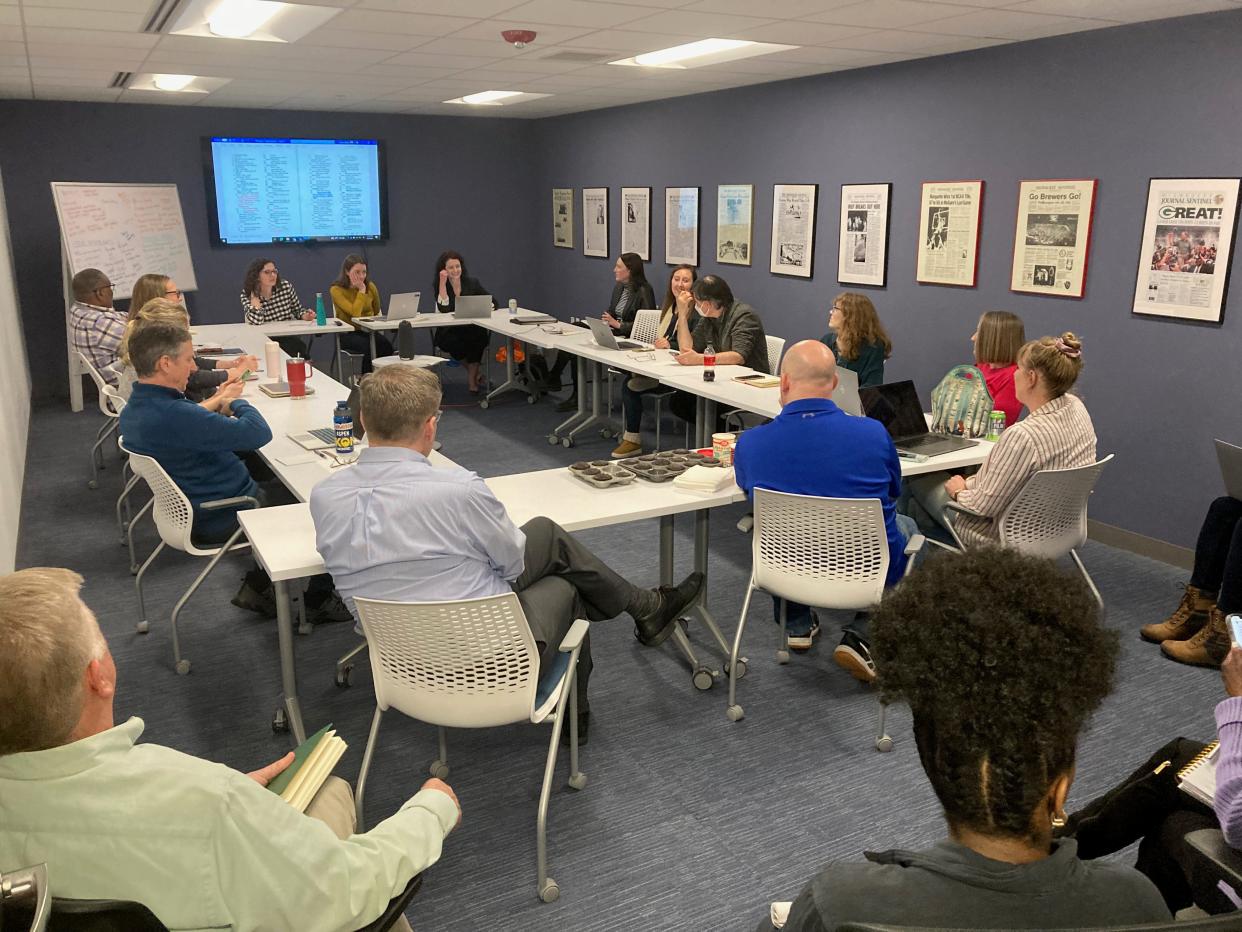Everyone defines Milwaukee in their own way. Here's how we decided on 100 objects in our city

Defining Milwaukee in just 100 objects was a tall task. We knew no matter what items we landed on, there would be disagreement.
What one person considers quintessential Milwaukee may not make the cut on another person’s list. A longtime resident will offer a different perspective than a newcomer. A foodie’s suggestions will slant differently than a history buff's.
The initial brainstorm began in February with a small group of Journal Sentinel reporters. We wanted to paint a well-rounded picture of the city and its neighborhoods, but we knew we were limited by our own life experiences. So we sought extensive feedback through several rounds of emails and a newsroom-wide meeting marked by lively debate. We consulted with friends and family to further refine the list. Editors winnowed the selection down to what you will read in today’s pages.
We aimed for a list of objects that represented all facets of Milwaukee, not just the lakefront and downtown. We looked from the city's sports culture to its dining scene, its arts institutions to its cultural traditions. That meant exploring beyond Milwaukee's well-known German heritage to its Hmong and Latino communities and its Black history, for instance.
We also sought a balance between the serious and the silly. Both the 16th Street Viaduct — the site of fair housing marches in the 1960s — and the legend of the ghost at the Pfister hotel contribute to Milwaukee's rich cultural fabric.
Some decisions — like City Hall and the Calatrava wings — were easy. Others were the subject of significant deliberation. The Milwaukee Public Museum, for example, was controversial. Do we go with a butterfly? The rattlesnake button? The T. Rex tearing apart the stegosaurus? Ultimately, we landed on the Granny from the Streets of Old Milwaukee.
We wanted to avoid crafting a list made only of buildings, restaurants and bars. We hoped to go beyond the structures and institutions that surround us and instead home in on the tangible objects that make up life in Milwaukee.
One of our criteria was representing Milwaukee as it is today ? almost as if we were creating a time capsule to be dug up 100 years from now that would show the world the touchstones of our daily lives in 2024. This led us to oust some objects that are sadly no longer with us, including the highway whale wall, La Perla's rideable chile pepper and Marquette University's McCormick Hall.
We also chose to focus on the city of Milwaukee as opposed to the Milwaukee metro area. That led to nixing the Da Crusher statue, a Les Paul guitar and the Mary Nohl house. However, we made a few exceptions, including the State Fair cream puff.
Some other objects that didn’t make the cut ? and why:
Construction barrels: deemed too generic
The east side boat house: in the words of one editor, too “meh”
Miller Caves: six alcohol-related objects were already on the list
Lake effect: not a defined "object"
Kopp’s cows: too controversial to pick a side in the frozen custard debate
Fifty-one reporters contributed to this project, with each person writing about the historical or cultural significance of at least one object. Some selected their items based on their subject matter expertise. Caitlin Looby, who covers the Great Lakes, wrote about the University of Wisconsin-Milwaukee's freshwater research vessels. Others selected objects that have personal significance to them. Mary Spicuzza, for example, wrote about the box of Sciortino's cookies and the Milwaukee Public Market signs because of her Italian family's longtime ties to Milwaukee.
Across the world, people have undertaken similar projects. They have defined the U.S. Navy, the University of Virginia, the evolution of public health, the city of Madison, the history of Ireland and even the entire world in 100 objects.
We know your list of what defines Milwaukee is likely different from ours. But that is part of the project’s purpose — to spark a conversation about what defines this great city and celebrate all that makes it unique.
What did we miss? What doesn’t belong? Let us know here: bit.ly/MKE100More.
Kelly Meyerhofer covers higher education. Contact her at at [email protected] or 414-223-5168. Follow her on X (Twitter) at @KellyMeyerhofer.
Sophie Carson is a general assignment reporter who reports on religion and faith, immigrants and refugees and more. Contact her at [email protected] or 920-323-5758.
This article originally appeared on Milwaukee Journal Sentinel: 100 objects of Milwaukee project marked by debate, disagremeent
